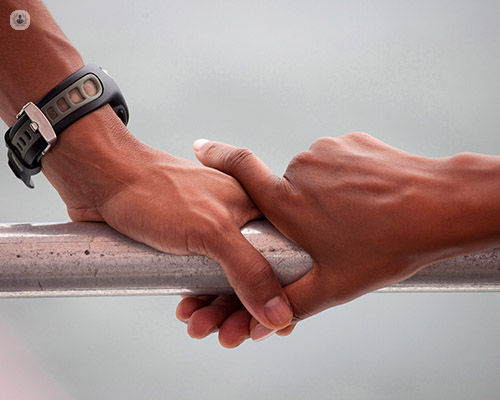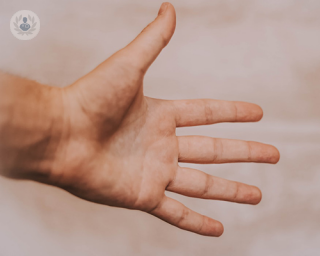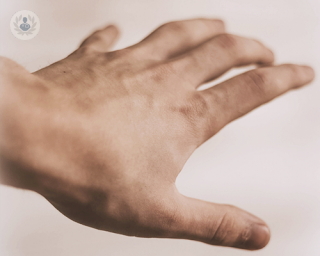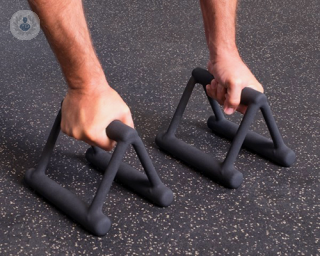Hand arthritis
Mr Muhammad Adeel Akhtar - Orthopaedic surgery
Created on: 11-13-2012
Updated on: 11-03-2023
Edited by: Conor Lynch
What is osteoarthritis of the hand?
Hand osteoarthritis is a degenerative joint condition, resulting in join pain, stiffness, and swelling in the hand. It most commonly occurs in the wrist, fingertips (DIP joint), middle knuckle (PIP joint), and the basilar joint (which connects the thumb and wrist).
Osteoarthritis is where the cartilage that cushions the bones at the joints wears away, which causes the bones to rub against one another, leading to inflammation, stiffness and pain.

What are the symptoms of hand arthritis?
The symptoms of osteoarthritis include:
- Pain – located around a joint or part of the hand, e.g. thumb, wrist, knuckle
- Stiffness – this can make it difficult to perform tasks such as using a phone or buttoning a shirt.
- Weakness – the patient may find it difficult to grip or pinch. It may hinder tasks like opening jars or turning the key in a car’s ignition.
- Nodes – bony growths that can develop where the bones have been rubbing. Heberden’s nodes develop on the end knuckle (the DIP joint), while Bouchard’s nodes develop on the middle knuckle (PIP joint).
- Bone spur
What causes hand arthritis?
Osteoarthritis of the hand occurs due to gradual wear and tear of the joint, which results in the cartilage wearing away. The cartilage is responsible for cushioning the bones and allowing smooth movement. Without it, the bones rub together, and movement becomes stiff. The exact cause of the initial deterioration is unknown.
What are the associated risk factors of hand arthritis?
More women develop osteoarthritis than men. Patients born with defective cartilage or malformed joints are also at increased risk. Other risk factors include:
- Old age
- Hand injuries
- Jobs requiring a lot of hand work, e.g. manufacturing jobs
- A family history of osteoarthritis
What is the treatment?
Osteoarthritis is a progressive disease, meaning there is no cure, and it will continue to get worse over time. However, it can be managed and its symptoms can be treated with a number of different methods:
- Pain medication – this is directed at relieving the symptoms of pain and inflammation. Over-the-counter anti-inflammatories are usually sufficient, but in extreme cases your doctor might prescribe something stronger.
- Exercises – simple exercises, such as touching your thumb to each fingertip, making a fist and then unfurling the fingers, or walking your fingers up and down a wall can help maintain flexibility in the hands
- Hot and cold compresses
- Splints for support on the digits or wrist
- Using tools designed to help people with arthritis
- Surgery – if osteoarthritis doesn’t respond to other treatments, there are surgical options. This could mean fusing the bones on either side of the arthritic joint together, limiting movement, but also limiting pain and inflammation. The other option is to reconstruct the joint, transplanting soft tissue from other parts of the body to replace the lost cartilage.
















